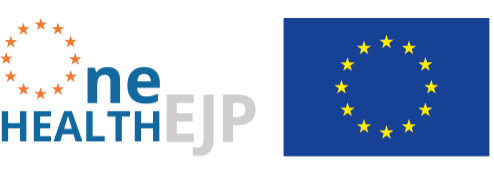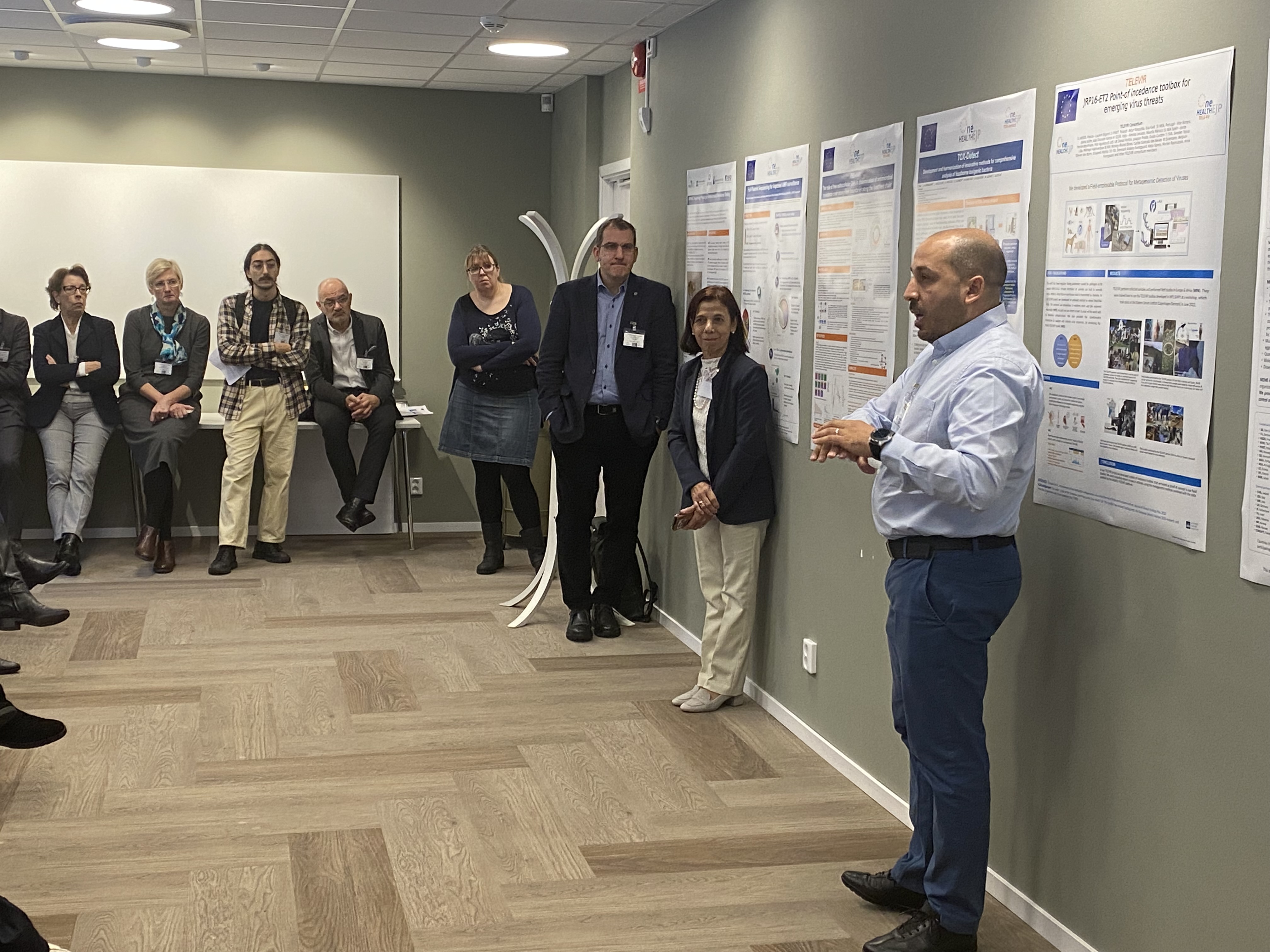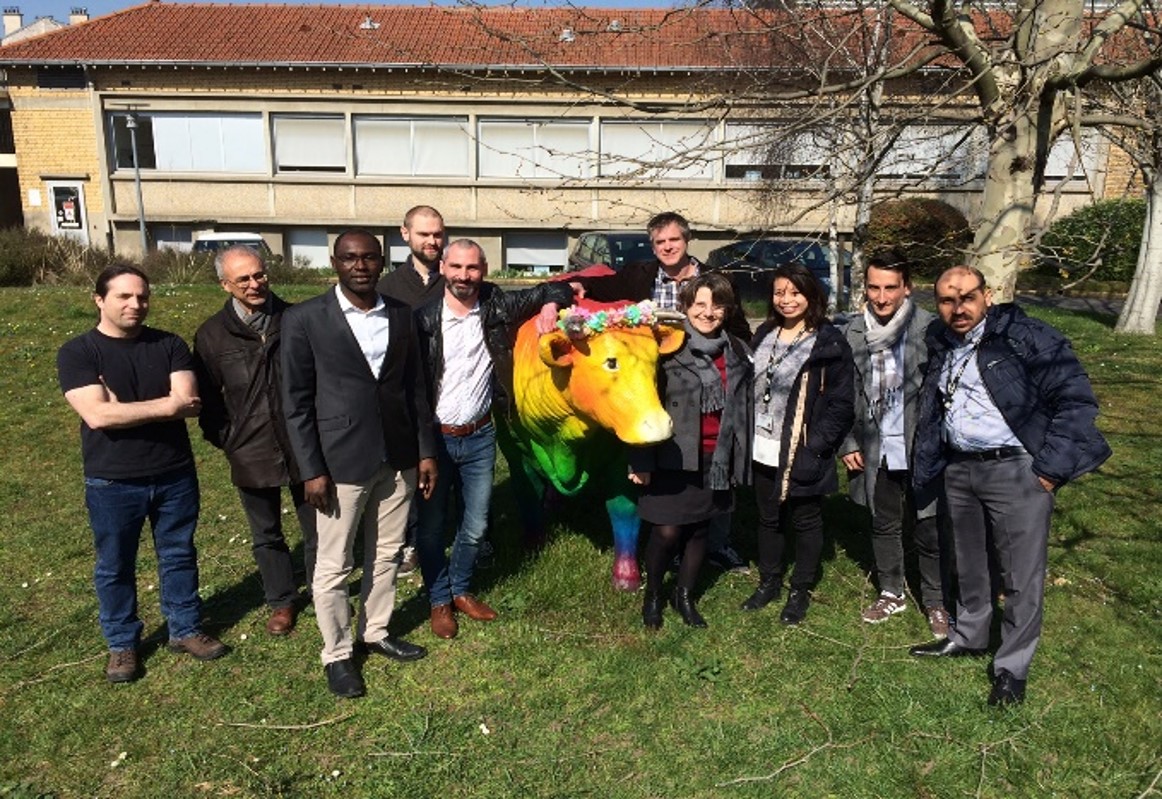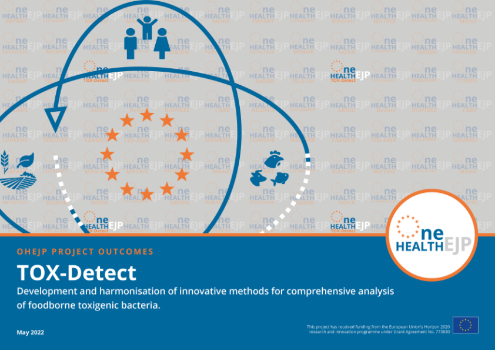25 Rue du Docteur Roux, Paris 15e Arrondissement, Île-de-France, France
14 Rue Pierre et Marie Curie, Maisons-Alfort, Île-de-France, France
Rue Juliette Wytsman - Juliette Wytsmanstraat 14, Ixelles - Elsene, Région de Bruxelles-Capitale - Brussels Hoofdstedelijk Gewest, Belgium
Max-Dohrn-Straße 8, Berlin, Berlin, Germany
147 Rue de l'Université, Paris 7e Arrondissement, Île-de-France, France
Ullevålsveien 68, Oslo, Oslo, Norway
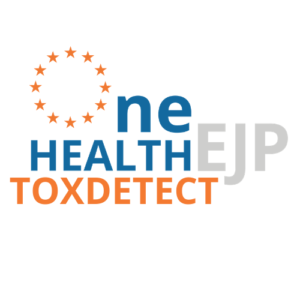
The Project #TOX-DETECT
| Start: | 1 January 2018 |
| Duration: | 3 Years |
| Domain: | Emerging Threats |
| Keywords: | Toxigenic bacteria, non-NGS based detection, mass spectrometry, immunoassays, toxicity tests |
| Contact: | Jacques-Antoine Hennekinne (ANSES) & Yacine NIA (ANSES) |
TOX-Detect: Development and harmonisation of innovative methods for comprehensive analysis of foodborne toxigenic bacteria, ie. Staphylococci, Bacillus cereus and Clostridium perfringens
Foodborne disease outbreaks (FBOs) occur when people are exposed to unsafe levels of contaminants in food products, causing illnesses (most frequently gastrointestinal) and in some cases more serious disease or even death. According to the European Food Safety Authority (EFSA), a foodborne disease outbreak is defined as “an incident during which at least two people contract the same illness from the same contaminated food or drink” (EFSA Newsroom 2019). In the European Union (EU), the most frequent causative agents are bacteria, bacterial toxins, viruses, and parasites (EFSA Monitoring of foodborne diseases).
In recent years, thousands of foodborne outbreaks have been reported in the EU (5,175 in 2019 and 3,086 in 2020), with tens of thousands human cases, thousands of hospitalizations and less than one hundred deaths (The European Union One Health 2020 Zoonoses Report, The European Union One Health 2019 Zoonoses Report). Among the known causative agents, bacteria were reported to have caused the most outbreaks (35.4% in 2020 and 26.4% in 2019) followed by bacterial toxins (17.1% in 2020 and 19.3% in 2019), viruses (5.0% in 2020 and 10.7% in 2019), other causative agents (2.2% in 2020 and 3.0% in 2019), and parasites (0.5% in 2020 and 0.6% in 2019) (The European Union One Health 2020 Zoonoses Report, The European Union One Health 2019 Zoonoses Report). It should be noted that the causative agents of a large proportion of foodborne outbreaks remain unidentified.
Outbreaks caused by bacterial toxins represent a major proportion of reported FBOs (thousands of cases each year). Bacterial toxins can cause tissue damage and disable immune responses when ingested, triggering acute food-poisoning symptoms (such as vomiting, diarrhoea and light-headedness). At EU level, the most frequently reported causes of food-poisoning outbreaks (FPOs) are bacterial toxins produced by Bacillus spp. (Bacillus cereus), Clostridium spp. (C. perfringens and C. botulinum) and Staphylococcus spp. (S. aureus). The true incidence of FPOs caused by these toxigenic bacteria is underestimated for many reasons, including misdiagnosis, under-reporting (particularly of minor outbreaks), and improper sample collection or laboratory examination. The complexity and diversity of food matrices involved in FPOs caused by bacterial toxins add to the difficulty. Moreover, FPOs caused by toxigenic bacteria share similar symptoms, making it difficult to clearly identify the causative agent behind the outbreak during investigations. All this may also explain the high proportion of “weak evidence” FPOs reported by EFSA when bacterial toxins are the causative agent.
The scientific community involved in monitoring foodborne outbreaks caused by bacterial toxins needs harmonised and innovative detection methods for this underestimated One Health issue.
What is the TOX-Detect Project?
The TOX-Detect project involves 6 partners across Europe: The French Agency for Food, Environmental and Occupational Health & Safety (ANSES), the French National Research Institute for Agriculture, Food and Environment (INRAe) and the Institut Pasteur (IP) in France, Sciensano in Belgium, the German Federal Institute for Risk Assessment (BfR) in Germany, and the Norwegian Veterinary Institute (NVI) in Norway.
With these partnerships between human, animal and plant health, food safety, and environmental protection institutes, the TOX-Detect project was designed to develop and harmonise methods for detecting toxin expression and production by toxigenic bacteria across all One Health pillars.
At the start of the project, several important knowledge gaps were identified, including the need to:
- Implement a relevant collection of pathogenic strains including strains from various sources (animal, environmental, food and human samples) and different geographic locations.
- Develop tools not reliant on genome sequencing (non-NGS), but rather using protein/toxin detection and identification, such as mass spectrometry (MALDI-ToF, LC-MS) and enzymatic assays (ELISAs) for strain characterization.
- Establish a set of Standard Operating Protocols (SOPs) and evaluate the transferability of the methods thus developed through several inter-laboratory studies.
The TOX-Detect project aimed to address these knowledge gaps by:
- Collating and fully characterising a large number of toxin-producing bacterial isolates from environmental, clinical, and food samples provided by all the partner institutes.
- Developing dedicated ELISA and mass spectrometry methods, and libraries for the identification of the targeted pathogens.
- Harmonising Standard Operating Procedures (SOPs) for all the targeted virulence factors and methods.
It is crucial to adopt a One Health approach so as to detect and monitor toxigenic bacteria across all One Health pillars to prevent foodborne outbreaks and further improve food safety.
The Project Impact Brochure is available on Zenodo.
Project Assets
The key aims of the TOX-Detect project were to collate a reference collection of strains of toxin-producing bacteria and to develop dedicated methods and libraries for the identification of Staphylococci spp., Bacillus spp., and Clostridium spp. To be able to develop some of the MS methods and the ELISAs, we also had to produce reference material—i.e., the toxins had to be cloned and produced in milligram amounts in partner labs.
To achieve the first goal, all the partners collected and fully characterised a large number of toxin-producing bacteria isolates from environmental, clinical, and food samples from different geographic locations. This work resulted in a list of well characterised reference strains of S. aureus, B. cereus and C. perfringens that was reported as Deliverable 1.1.
This reference collection of strains and the collection and characterisation methods applied is of interest for the European Union Reference Laboratory (EURL) network. It was also shared with another OH EJP project, CARE: Cross-sectoral framework for quality Assurance Resources for countries in the European Union.
This strain collection was used by the OH EJP TOX-Detect project to evaluate a panel of three methods: (i) Matrix-assisted laser desorption/ionization-time of flight (MALDI-ToF), (ii) Liquid chromatography–mass spectrometry (LC-MS) and (iii) enzyme-linked immunosorbent assay (ELISA) for the detection and characterization of the three studied pathogens and some of their toxins. These tools provided relevant information and data on toxin expression and production by toxigenic strains responsible for food-poisoning outbreaks. A total of 15 harmonised SOPs for all the targeted virulence factors and 6 dedicated methods were designed and shared with all the partners to be used in inter-laboratory studies. These inter-lab tests were prepared according to the ISO/IEC 17043 standard and demonstrated the robustness and efficiency of the SOPs and methods designed during the project.
The reference collection of strains was also used to develop dedicated Maldi-ToF (mass spectrometry) libraries that can be consulted in Deliverable 1.2: Libraries of MALDI-ToF reference spectra. These libraries were tested in a dedicated inter-lab study generating more than 3,000 data and a high percentage of correct identifications (an improvement over other current methods); to read more about the results, please consult Deliverable 5.2 task 1 on the inter-laboratory test of the MALDI-ToF method. As the results obtained were highly satisfactory, these libraries will be shared with the European Union Reference Laboratory network. The MALDI-ToF libraries will complete the commercial database with spectra obtained from strains from foodborne outbreaks in the European Union. After publication of the work in an open access journal, the whole scientific community can benefit from this new MALDI-ToF library in order to improve the MALDI-ToF method in terms of discrimination potential and to propose alternative confirmatory tests.
Pathogen-specific studies were also performed under this project. Toxicity and enterotoxin data obtained for Clostridium perfringens strains isolated from foodborne outbreaks in the European Union are reported in Deliverable 3.3: Report on MS-based methods for the detection of Clostridium perfringens enterotoxin (CPE) and virulence factors from Clostridium perfringens. This set of complementary tools can be used by reference and expert laboratories for foodborne outbreak investigations, especially the RT PCR and LC-MS techniques. Studies dedicated to Staphylococcal enterotoxins (Deliverable 3.1 and Deliverable 4.1) indicate that concentrations produced by enterotoxins SEM, SEN, and SEO are much lower than those of classical enterotoxins. This information was presented to the EURL for Coagulase Positive Staphylococci (EURL for CPS) which will use it to develop further studies and methods as reported in the EURL’s work program. Additionally, enterotoxins and antibodies produced during the project were transferred to the EURL for CPS so that they could be used to enlarge the scope of detection methods for staphylococcal enterotoxins.
Finally, a comparison of B. cereus strains of various origins revealed that the cytotoxic potential of B. cereus is multifactorial, and that a combination of new bacterial factors may be associated with pathogenicity. This paves the way for future research in the field for improved diagnosis and strain identification.
Kavanaugh, D. W., Glasset, B., Dervyn, R., Guérin, C., Plancade, S., Herbin, S., Brisabois, A., Nicolas, P., & Ramarao, N. (2022). New genetic biomarkers to differentiate non-pathogenic from clinically relevant Bacillus cereus strains. Clinical microbiology and infection: the official publication of the European Society of Clinical Microbiology and Infectious Diseases. 28(1), 137.e1–137.e8. DOI: https://doi.org/10.1016/j.cmi.2021.05.035
Borges Lima, D., Dupré, M., Mariano Santos, M. D., Carvalho, P. C., & Chamot-Rooke, J. (2021). DiagnoTop: A Computational Pipeline for Discriminating Bacterial Pathogens without Database Search. Journal of the American Society for Mass Spectrometry. 32(6), 1295–1299. DOI: https://doi.org/10.1021/jasms.1c00014
Glasset, B., Sperry, M., Dervyn, R., Herbin, S., Brisabois, A., Ramarao, N. (2021). The cytotoxic potential of Bacillus cereus strains of various origins. Food Microbiology. 98, 103759. DOI: https://doi.org/10.1016/j.fm.2021.103759
Ramarao, N., Tran, S-L, Marin, M., Vidic, J. (2020). Advanced Methods for Detection of Bacillus cereus and Its Pathogenic Factors. Sensors. 20(9), 2667. DOI: https://doi.org/10.3390/s20092667
Mahamat Abdelrahim, A., Radomski, N., Delannoy, S., Djellal, S., Le Négrate, M., Hadjab, K., Fach, P., Hennekinne, J-A., Mistou, M-Y., Firmesse, O. (2019). Large-Scale Genomic Analyses and Toxinotyping of Clostridium perfringens Implicated in Foodborne Outbreaks in France. Frontiers in Microbiology. 10:777. DOI: https://doi.org/10.3389/fmicb.2019.00777
Vidic, J., Vizzini, P., Manzano, M., Kavanaugh, D., Ramarao, N., Zivkovic, M., Radonic, V., Knezevic, N., Giouroudi, I., Gadjanski, I. (2019). Point-of-Need DNA Testing for Detection of Foodborne Pathogenic Bacteria. Sensors. 19(5), 1100. DOI: https://doi.org/10.3390/s19051100
